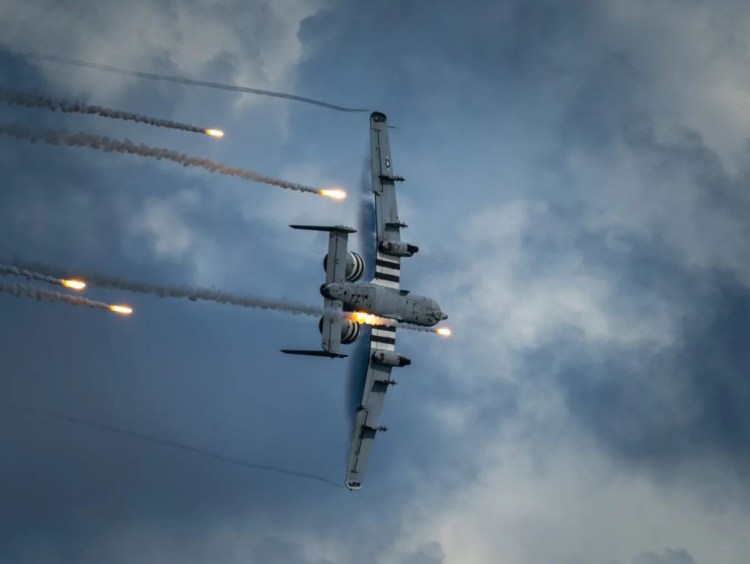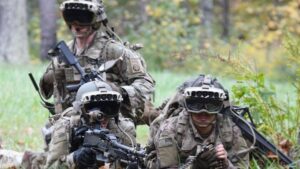Editor’s Note: The following article originally appeared on Warrior Maven, a Military Content Group member website.
The A-10C Thunderbolt II, a mainstay of the United States Air Force’s close air support fleet, is undergoing significant upgrades to ensure its effectiveness in future conflicts. This venerable aircraft, known affectionately as the “Warthog,” has been a critical asset for ground support missions due to its durability, firepower, and precision.
The A-10C is receiving a suite of enhancements aimed at modernizing its capabilities. These upgrades include improved avionics, weapons systems, and survivability features. The focus is on ensuring that the A-10C can operate effectively in the increasingly sophisticated electronic and cyber warfare environments expected in future battles.
A key component of the A-10C’s upgrade is the integration of new weapons systems. This includes the addition of advanced precision-guided munitions and updated targeting pods, which will enhance the aircraft’s ability to engage moving targets with greater accuracy. The upgrades will also allow the A-10C to better support ground forces in complex, contested environments.
The A-10C’s avionics and communications systems are being overhauled to improve interoperability with other U.S. and allied forces. This includes the implementation of modern data links and communication networks, enabling the Warthog to share real-time battlefield information with ground troops and other assets in the theater of operations.
Given the A-10C’s role in close air support, survivability enhancements are a critical aspect of its upgrade. The aircraft is receiving improved armor and defensive systems to protect against ground-based anti-aircraft threats. These improvements will ensure that the A-10C can continue to operate effectively in high-threat environments, providing crucial support to ground forces.
The ongoing upgrades are part of a broader effort to extend the service life of the A-10C fleet well into the future. Despite discussions about its retirement, the Air Force has committed to keeping the Warthog operational due to its unique capabilities and the vital role it plays in supporting ground operations. The enhancements will ensure that the A-10C remains a formidable asset in the U.S. military’s arsenal for years to come.
Editor’s Note: The following article originally appeared on Warrior Maven, a Military Content Group member website.
The A-10C Thunderbolt II, a mainstay of the United States Air Force’s close air support fleet, is undergoing significant upgrades to ensure its effectiveness in future conflicts. This venerable aircraft, known affectionately as the “Warthog,” has been a critical asset for ground support missions due to its durability, firepower, and precision.
The A-10C is receiving a suite of enhancements aimed at modernizing its capabilities. These upgrades include improved avionics, weapons systems, and survivability features. The focus is on ensuring that the A-10C can operate effectively in the increasingly sophisticated electronic and cyber warfare environments expected in future battles.
A key component of the A-10C’s upgrade is the integration of new weapons systems. This includes the addition of advanced precision-guided munitions and updated targeting pods, which will enhance the aircraft’s ability to engage moving targets with greater accuracy. The upgrades will also allow the A-10C to better support ground forces in complex, contested environments.
The A-10C’s avionics and communications systems are being overhauled to improve interoperability with other U.S. and allied forces. This includes the implementation of modern data links and communication networks, enabling the Warthog to share real-time battlefield information with ground troops and other assets in the theater of operations.
Given the A-10C’s role in close air support, survivability enhancements are a critical aspect of its upgrade. The aircraft is receiving improved armor and defensive systems to protect against ground-based anti-aircraft threats. These improvements will ensure that the A-10C can continue to operate effectively in high-threat environments, providing crucial support to ground forces.
The ongoing upgrades are part of a broader effort to extend the service life of the A-10C fleet well into the future. Despite discussions about its retirement, the Air Force has committed to keeping the Warthog operational due to its unique capabilities and the vital role it plays in supporting ground operations. The enhancements will ensure that the A-10C remains a formidable asset in the U.S. military’s arsenal for years to come.
Alongside the physical upgrades to the aircraft, the A-10C program is also focusing on advanced training and simulation systems for pilots. These systems are designed to prepare A-10C pilots for the complexities of modern warfare, including operations in contested airspaces and coordination with other air and ground assets. The goal is to maintain the highest levels of readiness and effectiveness for A-10C crews.
The upgraded A-10C Thunderbolt II is expected to continue its global deployment, supporting U.S. and allied operations wherever needed. Its adaptability for the future fight ensures that it will remain an essential tool in the U.S. military’s close air support and ground-attack missions, capable of delivering decisive firepower in support of ground forces engaged in combat.
The A-10C Thunderbolt II’s comprehensive upgrade program highlights the U.S. Air Force’s commitment to maintaining this iconic aircraft’s capabilities in the face of evolving global threats. By adapting the Warthog for future conflicts, the Air Force ensures that it will continue to provide unmatched close air support, safeguarding ground troops and contributing to mission success in operations around the world.



